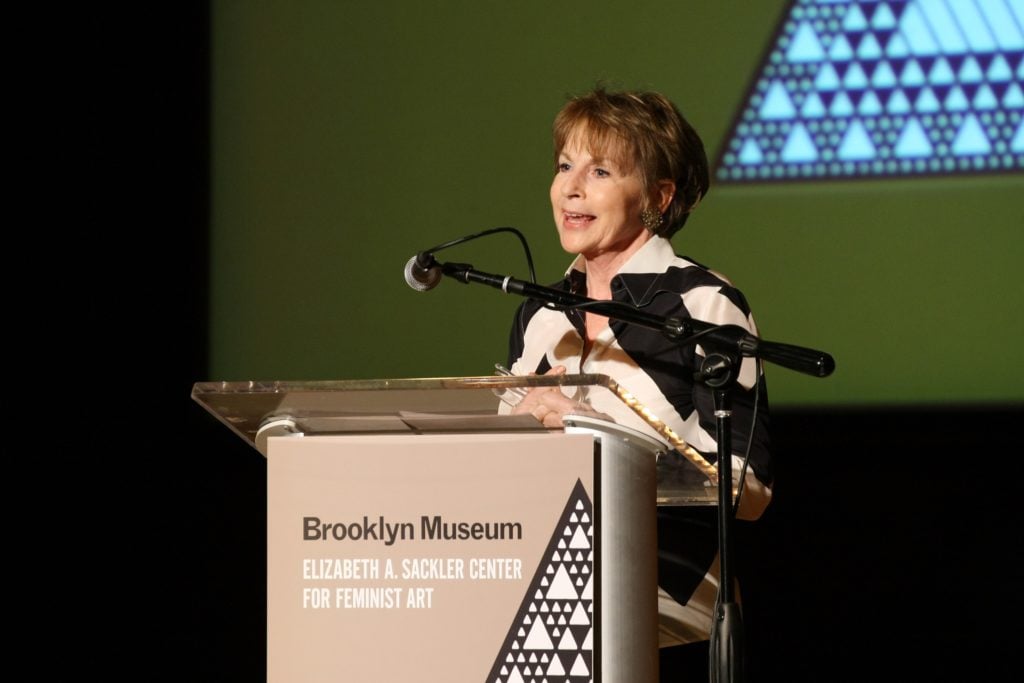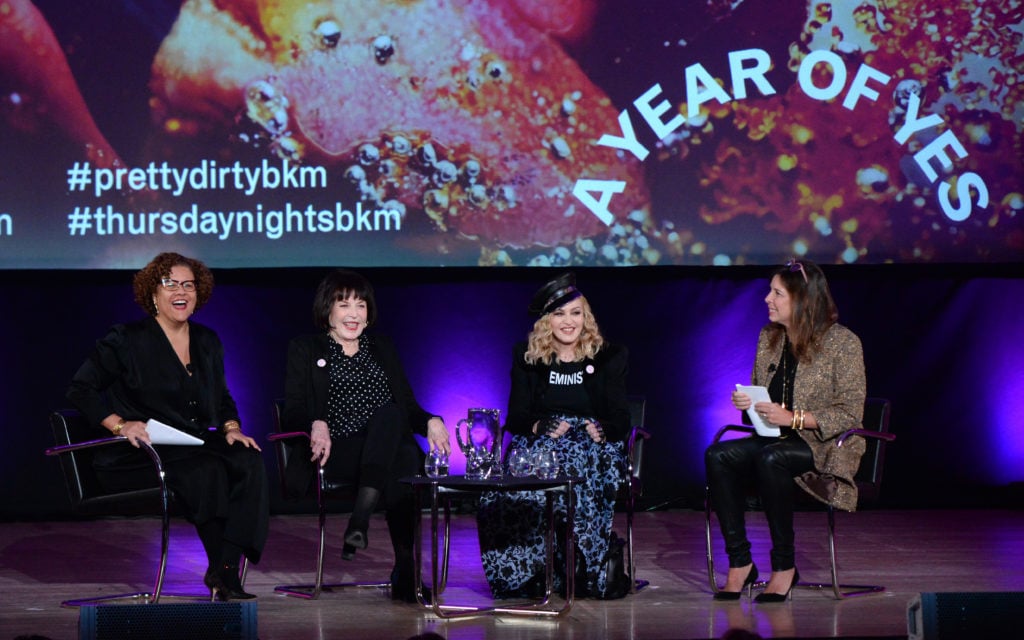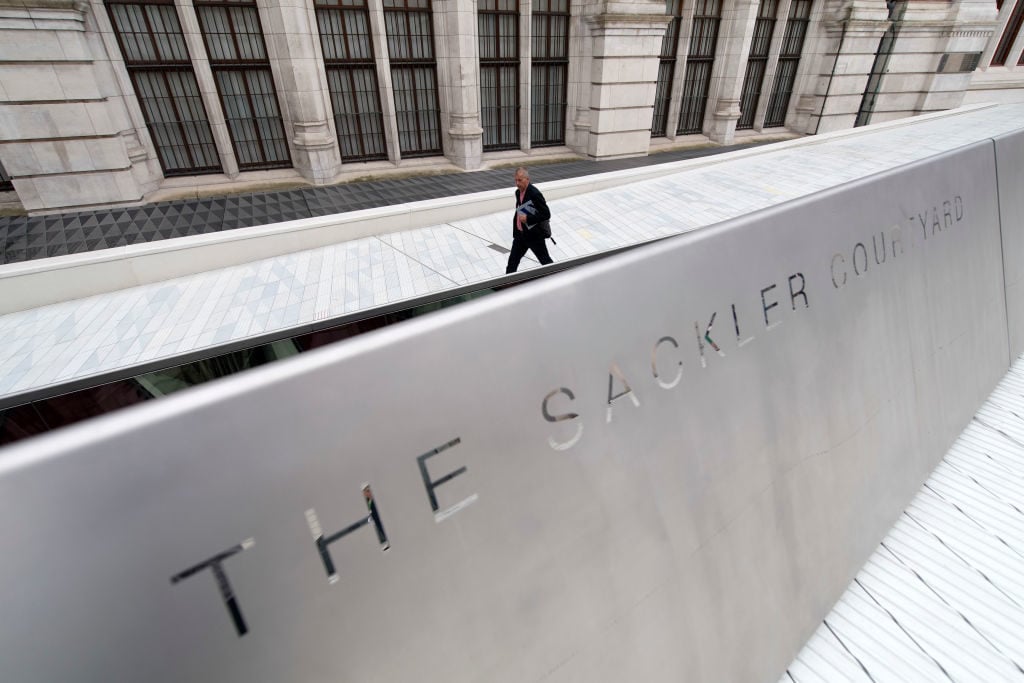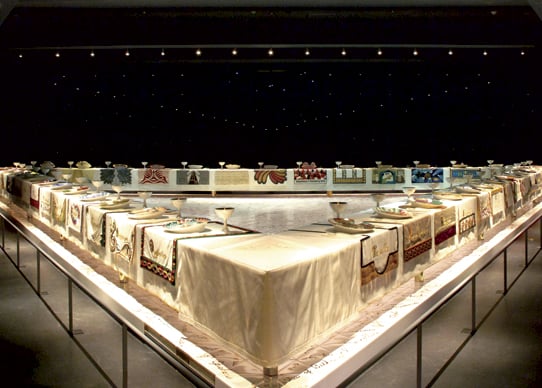Opinion
In the Discussion About the Sacklers and Oxycontin, It’s Important to Get the Facts Right
Artist Natalie Frank argues that many of the current conversations have left out one important point.

Artist Natalie Frank argues that many of the current conversations have left out one important point.

Natalie Frank

In recent months, discussion surrounding the Sackler family has rippled through the press and the art world. Exposés in Esquire and The New Yorker and a campaign by the artist Nan Goldin have delved into the family’s assets and philanthropy. A sizable portion of those assets—specifically, those belonging to two Sackler brothers, Mortimer and Raymond, and their heirs—was built on sale of the narcotic painkiller Oxycontin.
The Sackler name graces museum wings, courtyards, schools, and galleries around the world and has become the center of a complicated debate about cultural philanthropy and if and how institutions should consider the source of donated funds.
But many of these conversations have left out one important point, which has left me confused and angry. Elizabeth A. Sackler—the activist, historian, and advocate for feminist causes, American Indians, and women and children of incarceration—has been imprecisely and wrongly implicated as a beneficiary of the opioid crisis. The claim that she has profited off of the sale of OxyContin threatens to impugn her own important contributions and those of the Elizabeth A. Sackler Center for Feminist Art at the Brooklyn Museum.
Some of the many media articles about the family, such as Christopher Glazek’s piece in Esquire, have drawn the correct distinction between Elizabeth Sackler and her father Arthur M. Sackler—who have never been involved in nor benefited from the sale of Oxycontin—and other branches of the Sackler family, who have been involved in and benefited directly from this harmful drug through their company Purdue Pharma.
But a few writers, artists, and media outlets have erroneously misstated this divide. One article in Vice, for example, noted that the knowledge of the source of the Sackler fortune “might make your next visit to the Brooklyn Museum or Metropolitan Museum of Art feel very different.”

Elizabeth Alexander, Marilyn Minter, Madonna, and Anne Pasternak at the Brooklyn Museum last year. The talk was part of a program celebrating the 10th anniversary of the Elizabeth A. Sackler Center for Feminist Art. Courtesy of Kevin Mazur/Getty Images.
Perhaps as insidiously, others—including, in some cases, artnet News—have implicated Elizabeth and Arthur through omission, under the general umbrella of the “Sackler family.” Nan Goldin’s powerful personal essay for Artforum begins with a quote from Arthur to his children: “Leave the world a better place than when you entered it.” The photographer does not make any distinctions among branches of the Sackler family. (Just this week, Elizabeth Sackler said that she supports Goldin’s “commitment to take action” and described Purdue Pharma’s role in the crisis as “morally abhorrent.”)
Here are the facts. Raymond and Mortimer Sackler bought their brother Arthur’s share in Purdue, the company they founded, from his estate after he died in 1987. Purdue did not bring Oxycontin to market until 1995. Most experts date the beginning of the opioid crisis to 1998–99.
Both Arthur Sackler and his brothers, Raymond and Mortimer, have made distinct contributions to museums, universities, and institutions worldwide, often separately. Arthur established the Sackler Gallery at the Metropolitan Museum of Art to house Chinese antiquities in 1963. In 1974, the three brothers together funded the Temple of Dendur.
Arthur went on to donate money to the Smithsonian Institution in Washington, DC; the Royal Academy in London; and Tufts, Princeton and Harvard Universities, among others. Raymond and Mortimer’s branches of the family have supported the Dia Art Foundation, the Solomon R. Guggenheim Museum and the American Museum of Natural History in New York; the Louvre in Paris; and the Victoria & Albert Museum and the National Gallery in London, to name a few.

The Sackler Courtyard, a new addition to the Victoria and Albert museum is unveiled to the public in London on June 28, 2017. Photo: Justin Tallis/AFP/Getty Images.
Arthur worked within medical advertising, a field developed in the 1920s by William Douglas McAdams, whose firm he would eventually run—but tracing the marketing of OxyContin and the current opioid crisis to Arthur Sackler’s innovations in the field is akin to blaming Einstein for the use of the atomic bomb. The New Yorker’s story implies that Arthur Sackler’s marketing of Valium and Librium turned people into junkies. But the onus ought to fall on Roche, the maker of Valium, which “had conducted no studies of its addictive potential.”
Implicating Elizabeth via her father jeopardizes both of their legacies, and could make it more difficult for the Elizabeth A. Sackler Center for Feminist Art to continue to bring art, diverse audiences, education, and activism under one roof.
Its mission is important. The Elizabeth A. Sackler Center for Feminist Art is the only institution in the world dedicated to presenting and educating the public about feminist art. I have been on the Council for Feminist Art at the center for a handful of years. I have seen firsthand the power of its exhibitions, its tours and talks, and its support of women, artists of color, LGBTQ artists, incarcerated women, and children.
The center opened in 2007 with a landmark show, “Global Feminisms,” co-curated by the late art historian Linda Nochlin. It was the first international exhibition exclusively dedicated to feminist art from 1990 to the present. Under the leadership of the brilliant curator Catherine Morris, the center has gone on to present pivotal exhibitions of women artists. It has given artists including Zanele Muholi, Judith Scott, Wangechi Mutu, Ghada Amer, and Rachel Kneebone their first US surveys. Most recently, the center organized “We Wanted a Revolution: Black Radical Women, 1965–85,” which has been named by many as one of the most important exhibitions of the past year.

The Elizabeth A. Sackler Center for Feminist Art.
Photo: Courtesy of The Brooklyn Museum
If a misunderstanding stands to make artists and funders potentially less likely to get involved with this great organization, the public will be poorer for it.
I remember sitting in the audience at the Brooklyn Museum this fall for the Sackler Center First Awards, which recognize women who are first in their field. As the honorees took the stage introduced by Gloria Steinem—including Roberta Kaplan, the lawyer who successfully secured the right for same-sex marriage, and Judy Chicago, an artist and icon of feminist art—I remember turning to the young woman next to me, a writer for Ms. Magazine. We were both teary eyed. The center has proven to be a place where our history is recognized, accessible, and directly in front of us.
Whenever Elizabeth is speaking, without fail, someone will ask her why she chose to use her own name and the word “feminist” in the title of the center she founded, whose curatorship she endows. Inevitably, she responds that there is a long way to go until we have parity; that the word “feminism” must be recognized and used; and that because women are too often not named for their work, she and the center must lead by example.
We are living through a cultural revolution. Individuals like Elizabeth—activists who work to expose and address abuse and imbalances of power, spark conversation and debate, and illicit radical change—make this moment, as the patriarchy wobbles, possible. What we cannot lose in this maelstrom of transformation is precision and specificity. A post-fact president threatens the world’s security. It is more important than ever to be precise in who and what we attempt to topple.
Natalie Frank is an artist based in New York. She is a member of the Council for Feminist Art at the Elizabeth A. Sackler Center for Feminist Art.